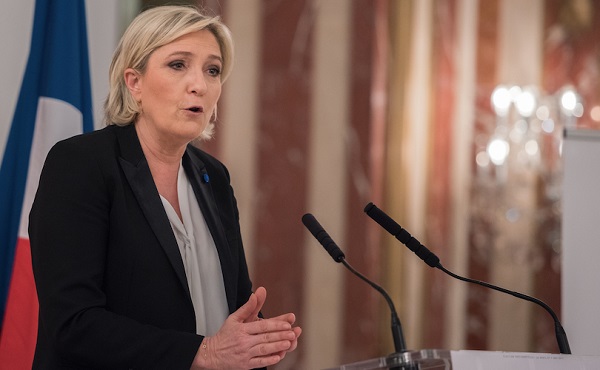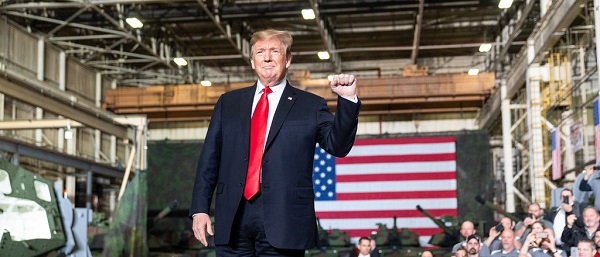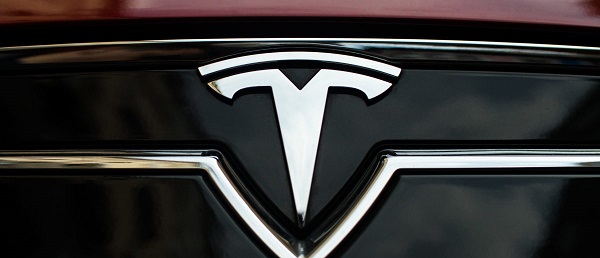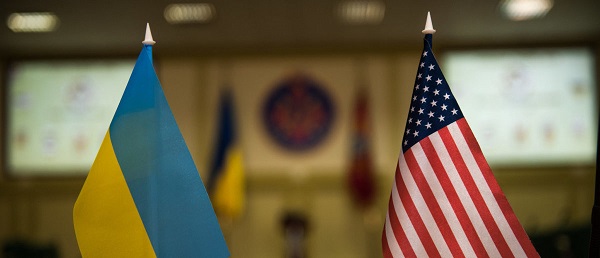Uncategorized
Got $1,100? Apple shows off its most expensive iPhone yet

CUPERTINO, Calif. — Apple unveiled three new iPhones on Wednesday, including its biggest and most expensive model yet, as the company seeks to widen the product’s appeal amid slowing sales.
CEO Tim Cook showed off the iPhone XS Max, which has a bigger screen than the one on last year’s dramatically designed model , the iPhone X. It’ll cost about $1,100, topping the iPhone X, which at $1,000 seemed jaw-dropping at the time. An updated iPhone X, now called the XS, stays at $1,000.
As with the iPhone X, both new phones have screens that run from edge to edge, an effort to maximize the display without making the phone too awkward to hold. The screen needs no backlight, so black would appear as truly black rather than simply dark. The Max model looks to be about the size of the iPhone 8 Plus, though the screen size is much larger.
The iPhone XS Max, which will be available on Sept. 21 — with orders open the week before — represents Apple’s attempt to feed consumers’ appetite for increasingly larger screens as they rely on smartphones to watch and record video and to take photos wherever they are.
By making more expensive iPhones, Apple has been able to boost its profits despite waning demand as people upgrade phones less frequently. IPhones fetched an average price of $724 during the April-June period, a nearly 20
Apple also showed off a cheaper iPhone, called the iPhone XR. It has a traditional, lower-quality screen and an aluminum body; it’s physically smaller than the iPhone 8 Plus but has a bigger screen. It’ll cost roughly $750 and come out on Oct. 26.
All three new models join the iPhone X in getting rid of the home button to make room for more screen. They will have facial-recognition technology to unlock the device.
Although it didn’t sell quite as analysts anticipated, the iPhone X still emerged as the most popular in Apple’s line-up, according to Cook. That emboldened the company to aim an even more expensive device at the affluent households that tend to gravitate to its products, especially in the U.S. and Europe.
For everyone else, many of whom are still using iPhones they purchased several years ago, there’s the XR.
“I am going to go out on a limb and say the XR is going to become Apple’s top-selling iPhone,” said analyst Patrick Moorhead of Moor Insights. “It is a smart strategy to keep more people in the Apple ecosystem and get even more people to come into it.”
The next major update to the iOS will be released next Tuesday, followed a week later by a Mac software update. Both will be free to install.
Apple also announced updates that push its Apple Watch further into medical device territory. It has a larger screen and a built-in heart sensor that the company said can detect irregular heart rates and perform an electrocardiogram. The latter feature has been cleared by the U.S. Food and Drug Administration, the company said.
Ben Wood of CCS Insight said getting U.S. regulatory clearance for that is a milestone that underscores the company’s leadership in health and fitness. Typically, smartwatches are marketed as consumer devices, not medical ones needing clearance.
These features will be available to U.S. customers later this year, but Apple did not say when it would make it to the rest of the world.
In addition, Apple said the Series 4 Apple Watch will also be able to detect when someone falls — and can tell the difference between a trip and a fall. If it detects a fall and the user doesn’t respond in a minute, it’ll automatically call for help. This feature may be especially attractive to older people or those with elderly parents worried about falling when no one is around to help.
___
AP Technology Writer Barbara Ortutay contributed from New York.
__
This story has been corrected to refer to the larger iPhone as the iPhone XS Max.
Michael Liedtke, The Associated Press
Uncategorized
Poilievre on 2025 Election Interference – Carney sill hasn’t fired Liberal MP in Chinese election interference scandal

From Conservative Party Communications
“Yes. He must be disqualified. I find it incredible that Mark Carney would allow someone to run for his party that called for a Canadian citizen to be handed over to a foreign government on a bounty, a foreign government that would almost certainly execute that Canadian citizen.
“Think about that for a second. We have a Liberal MP saying that a Canadian citizen should be handed over to a foreign dictatorship to get a bounty so that that citizen could be murdered. And Mark Carney says he should stay on as a candidate. What does that say about whether Mark Carney would protect Canadians?
“Mark Carney is deeply conflicted. Just in November, he went to Beijing and secured a quarter-billion-dollar loan for his company from a state-owned Chinese bank. He’s deeply compromised, and he will never stand up for Canada against any foreign regime. It is another reason why Mr. Carney must show us all his assets, all the money he owes, all the money that his companies owe to foreign hostile regimes. And this story might not be entirely the story of the bounty, and a Liberal MP calling for a Canadian to be handed over for execution to a foreign government might not be something that the everyday Canadian can relate to because it’s so outrageous. But I ask you this, if Mark Carney would allow his Liberal MP to make a comment like this, when would he ever protect Canada or Canadians against foreign hostility?
“He has never put Canada first, and that’s why we cannot have a fourth Liberal term. After the Lost Liberal Decade, our country is a playground for foreign interference. Our economy is weaker than ever before. Our people more divided. We need a change to put Canada first with a new government that will stand up for the security and economy of our citizens and take back control of our destiny. Let’s bring it home.”
Uncategorized
Canada Needs A Real Plan To Compete Globally

From the Frontier Centre for Public Policy
Ottawa’s ideological policies have left Canada vulnerable. Strategic action is needed now
As Canada navigates an increasingly complex geopolitical landscape, the next federal government must move beyond reflexive anti—Americanism regardless of its political leanings. Instead, Canada should prioritize national interests while avoiding unnecessary conflict and subservience.
The notion that Canada can stand alone is as misguided as the idea that it is only an economic appendage of the United States. Both perspectives have influenced policy in Ottawa at different times, leading to mistakes.
Rather than engaging in futile name-calling or trade disputes, Canada must take strategic steps to reinforce its autonomy. This approach requires a pragmatic view rooted in Realpolitik—recognizing global realities, mitigating risks, governing for the whole country, and seizing opportunities while abandoning failed ideologies.
However, if Washington continues to pursue protectionist measures, Canada must find effective ways to counteract the weakened position Ottawa has placed the country in over the past decade.
One key strategy is diversifying trade relationships, notably by expanding economic ties with emerging markets such as India and Southeast Asia. This will require repairing Canada’s strained relationship with India and regaining political respect in China.
Unlike past Liberal trade missions, which often prioritized ideological talking points over substance, Canada must negotiate deals that protect domestic industries rather than turning summits into platforms for moral posturing.
A more effective approach would be strengthening partnerships with countries that value Canadian resources instead of vilifying them under misguided environmental policies. Expand LNG exports to Europe and Asia and leverage Canada’s critical minerals sector to establish reciprocal supply chains with non-Western economies, reducing economic reliance on the U.S.
Decades of complacency have left Canada vulnerable to American influence over its resource sector. Foreign-funded environmental groups have weakened domestic energy production, handing U.S. industries a strategic advantage. Ottawa must counter this by ensuring Canadian energy is developed at home rather than allowing suppressed domestic production to benefit foreign competitors.
Likewise, a robust industrial policy—prioritizing mining, manufacturing, and agricultural resilience—could reduce dependence on U.S. and Chinese imports. This does not mean adopting European-style subsidies but rather eliminating excessive regulations that make Canadian businesses uncompetitive, including costly domestic carbon tariffs.
Another key vulnerability is Canada’s growing military dependence on the U.S. through NORAD and NATO. While alliances are essential, decades of underfunding and neglect have turned the Canadian Armed Forces into little more than a symbolic force. Canada must learn self-reliance and commit to serious investment in defence.
Increasing defence spending—not to meet NATO targets but to build deterrence—is essential. Ottawa must reform its outdated procurement processes and develop a domestic defence manufacturing base, reducing reliance on foreign arms deals.
Canada’s vast Arctic is also at risk. Without continued investment in northern sovereignty, Ottawa may find itself locked out of its own backyard by more assertive global powers.
For too long, Canada has relied on an economic model that prioritizes federal redistribution over wealth creation and productivity. A competitive tax regime—one that attracts investment instead of punishing success—is essential.
A capital gains tax hike might satisfy activists in Toronto, but it does little to attract investments and encourage economic growth. Likewise, Ottawa must abandon ideological green policies that threaten agri-food production, whether by overregulating farmers or ranchers. At the same time, it must address inefficiencies in supply management once and for all. Canada must be able to feed a growing world without unnecessary bureaucratic obstacles.
Ottawa must also create an environment where businesses can innovate and grow without excessive regulatory burdens. This includes eliminating interprovincial trade barriers that stifle commerce.
Similarly, Canada’s tech sector, long hindered by predatory regulations, should be freed from excessive government interference. Instead of suffocating innovation with compliance mandates, Ottawa should focus on deregulation while implementing stronger security measures for foreign tech firms operating in Canada.
Perhaps Ottawa’s greatest mistake is its knee-jerk reactions to American policies, made without a coherent long-term strategy. Performative trade disputes with Washington and symbolic grandstanding in multilateral organizations do little to advance Canada’s interests.
Instead of reacting emotionally, Canada must take proactive steps to secure its economic, resource, and defence future. That is the role of a responsible government.
History’s best strategists understood that one should never fight an opponent’s war but instead dictate the terms of engagement. Canada’s future does not depend on reacting to Washington’s policies—these are calculated strategies, not whims. Instead, Canada’s success will be determined by its ability to act in the interests of citizens in all regions of the country, and seeing the world as it is rather than how ideological narratives wish it to be.
Marco Navarro-Génie is the vice president of research at the Frontier Centre for Public Policy. With Barry Cooper, he is co-author of Canada’s COVID: The Story of a Pandemic Moral Panic (2023).
-

 2025 Federal Election22 hours ago
2025 Federal Election22 hours agoPoilievre To Create ‘Canada First’ National Energy Corridor
-

 2025 Federal Election2 days ago
2025 Federal Election2 days agoMainstream Media Election Coverage: If the Election Was a NHL Game, the Ice Would be Constantly Tilted Up and to the Left
-

 International1 day ago
International1 day agoFREE MARINE LE PEN!’: Trump defends French populist against ‘lawfare’ charges
-

 Energy2 days ago
Energy2 days agoTrump Takes More Action To Get Government Out Of LNG’s Way
-

 Health2 days ago
Health2 days agoSelective reporting on measles outbreaks is a globalist smear campaign against Trump administration.
-

 2025 Federal Election2 days ago
2025 Federal Election2 days agoMark Carney is trying to market globalism as a ‘Canadian value.’ Will it work?
-

 Automotive1 day ago
Automotive1 day agoDark Web Tesla Doxxers Used Widely-Popular Parking App Data To Find Targets, Analysis Shows
-

 COVID-1918 hours ago
COVID-1918 hours agoMaxime Bernier slams Freedom Convoy leaders’ guilty verdict, calls Canada’s justice system ‘corrupt’





